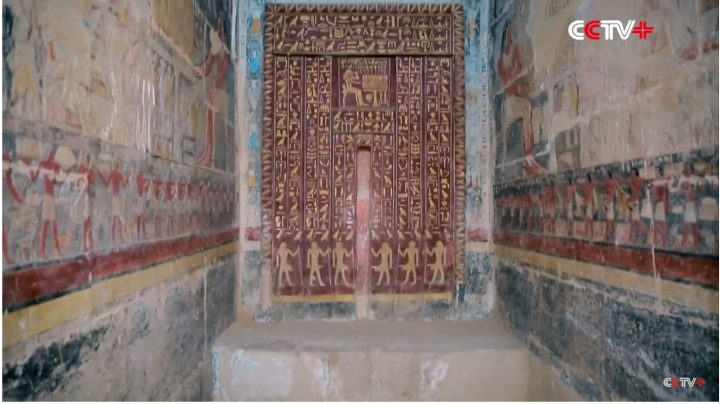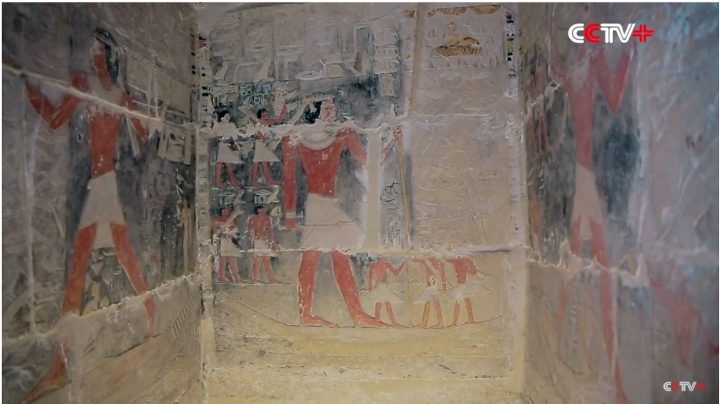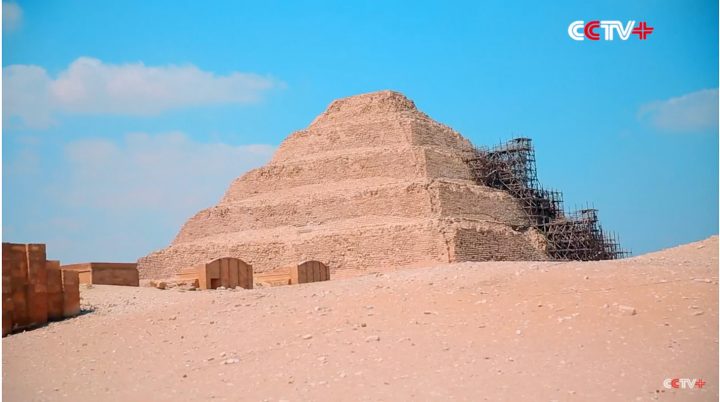The Untouched 4,000-Year-Old Egyptian Tomb of Mehu Opens to the Public
Untouched for nearly 4,000 years, the ornately painted tomb in Egypt's Saqqara region, is in nearly pristine condition.

There is, perhaps, a kind of paradox to treasures of antiquity — sometimes the most astonishing wonders of the ancient world have remained so because of a lack of exposure to the tourism that would share them with the modern era. Since its discovery in 1940 by Egyptologist Zaki Saad, the tomb of Mehu — located in the Saqqara region, close to the Great Pyramid of Giza — has been closed to the public. The 4,000-year-old tomb, which dates back to the 6th dynasty, recently officially opened to public visitation for the first time.

The tomb houses the earthly remains of Vizier Mehu, a high ranking advisor close to the pharaoh, and members of his family, including his son Meren Ra and his grandson Heteb Kha. The exact era of Mehu's life is disputed within the field of Egyptology — some historians believe he served under King Teti, who reigned until 2327 BCE, and others claim slightly later, under King Pepi, who reigned until 2287 BCE. What is without debate is that the tomb contains jaw-dropping wall paintings and relief carvings, with astonishing details, unusually bright colors, and period-specific motifs. For example, images of a crocodile marrying a turtle and celebration dances are depicted on the walls, as reported by The Express.
Of course, the vividness of these colors and the preservation of the delicate relief details within the tomb may largely be due to its exclusivity over the last 80 years. One cannot help but wonder if exposure to the thousands of flash photographs sure to follow its public debut will degrade the quality of this specimen of the ancient world. History offers a few cautionary tales in this vein: In 1940, for example, prehistoric cave paintings were discovered inside the Lascaux cave complex in France; it was subsequently opened to the public in 1948. But by 1955, carbon dioxide, heat, humidity, and other contaminants produced by visitors had begun to visibly damage the paintings, and create conditions that gave rise to fungi and lichen, which affected the environment of the caves and their contents.

Presumably, the opening of this tomb is an effort to drive tourism, but those interested in seeing this iconic example of ancient humanity's artistic and architectural success should probably book their trip to Egypt as soon as possible. One can imagine that, if the tomb is degraded through the introduction of outside contaminants, the cost of exposure may eventually become too great, and access could be restricted again. Egyptology enthusiasts are now being presented with a rare and limited opportunity to see a great work of art and history, undisturbed.
-- Sent from my Linux system.
"Hi there.very nice site.i was searching on the
ReplyDeletebest outdoor wireless security camera system with dvr
and i found your site.information is very useful. The author has done very good research in writing.it helped me a lot.thanks for writing.keep up good work.
"